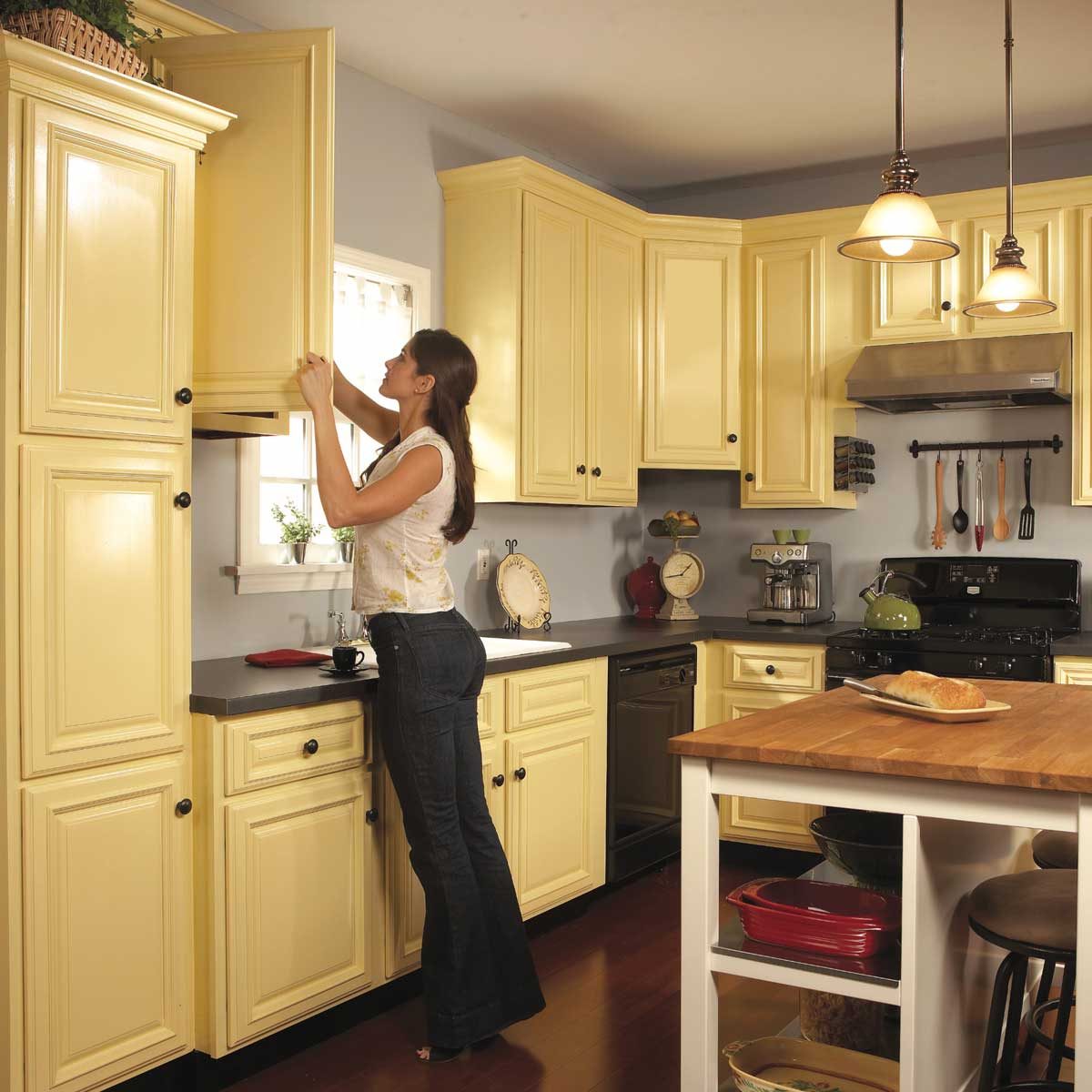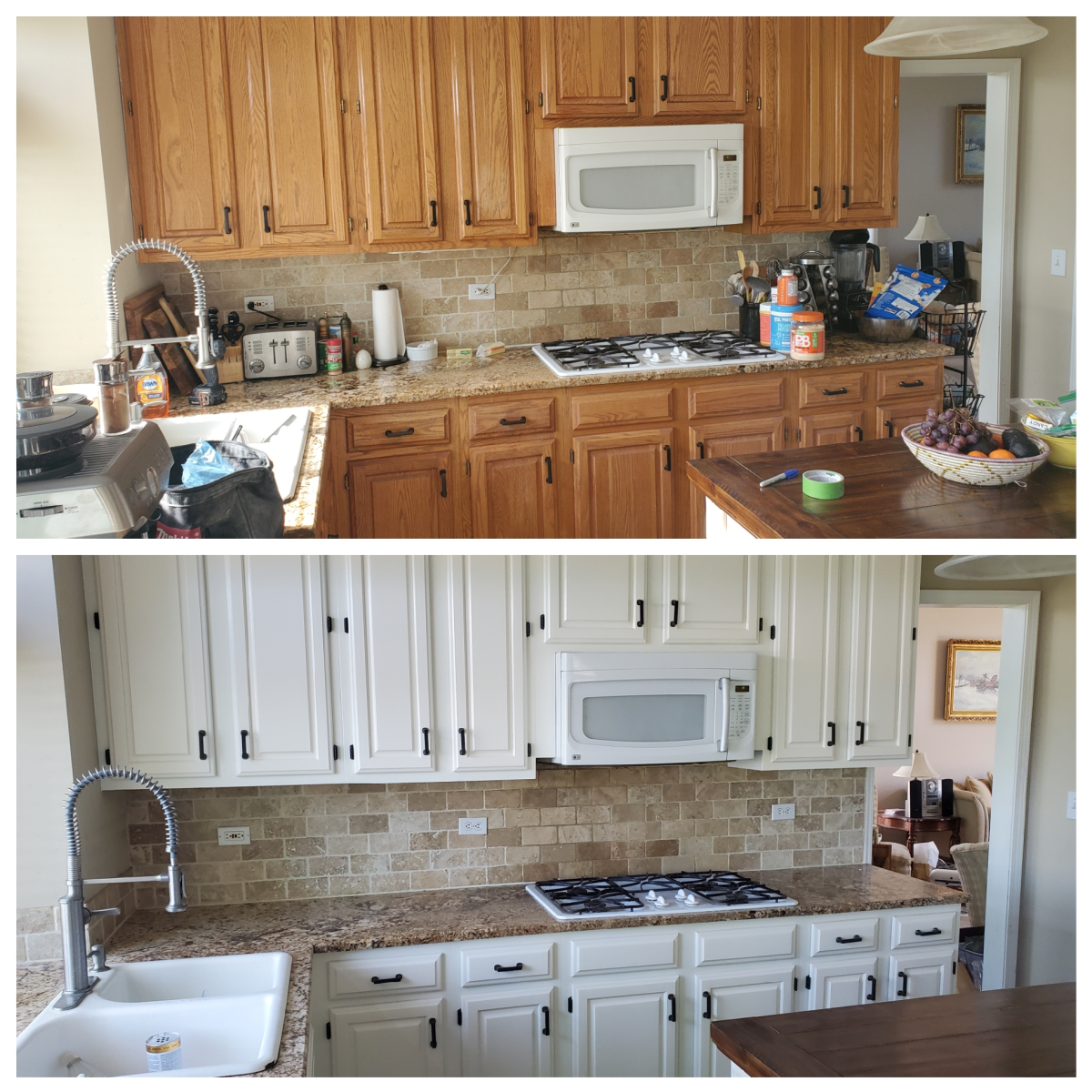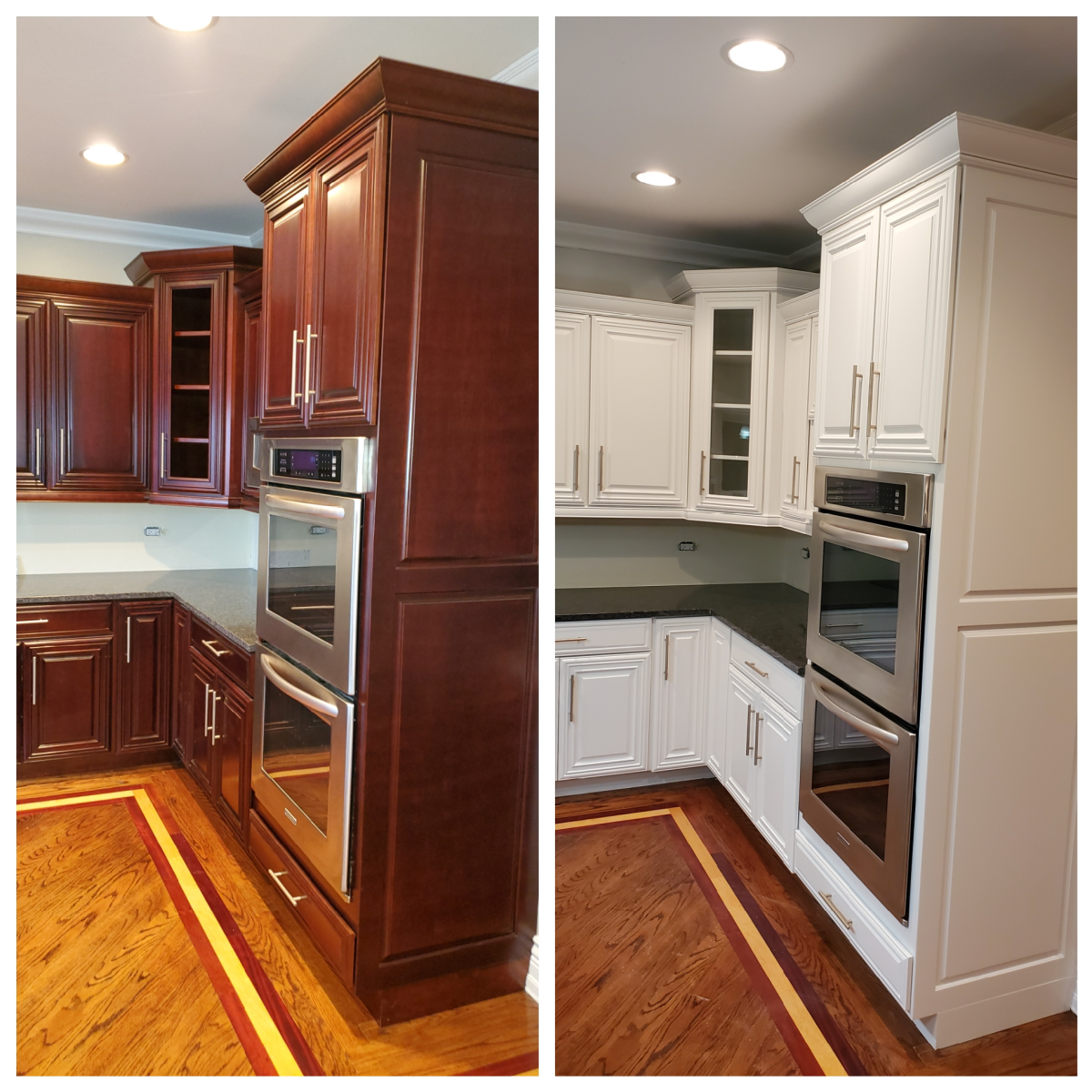The Benefits of Sprayable Kitchen Cabinet Paint

Transforming your kitchen with a fresh coat of paint is a popular and cost-effective way to update your space. While traditional brush-on paint has long been the go-to choice, sprayable kitchen cabinet paint offers several advantages that make it a compelling alternative. This type of paint delivers a professional-looking finish with less effort, making it an attractive option for DIY enthusiasts and experienced painters alike.
Saving Time and Effort
Sprayable paint offers significant time and effort savings compared to traditional brush-on paint. The fine mist of paint that is applied with a sprayer covers a larger area quickly and evenly, reducing the amount of time spent on each cabinet. This is especially beneficial when working with multiple cabinets or large surfaces. Additionally, the spray application eliminates the need for multiple coats, which can significantly shorten the overall painting process.
Achieving a Smooth and Even Finish
Sprayable paint is known for its ability to create a smooth and even finish that is difficult to achieve with a brush. The fine mist of paint allows for a consistent application, minimizing brushstrokes and other imperfections. This is particularly important for kitchen cabinets, as they are often subjected to frequent use and cleaning. A smooth and even finish not only enhances the aesthetics of the cabinets but also makes them easier to maintain.
Choosing the Right Sprayable Paint for Kitchen Cabinets: Sprayable Kitchen Cabinet Paint

Sprayable paint for kitchen cabinets offers a convenient and efficient way to refresh your kitchen’s look. But with various types of spray paint available, choosing the right one for your needs can be overwhelming. This section will guide you through the different types of sprayable paint, paint sheens, and brand considerations to help you make an informed decision.
Types of Sprayable Paint for Kitchen Cabinets
The type of sprayable paint you choose depends on the desired finish and the material of your cabinets. Here’s a breakdown of common types:
- Acrylic Lacquer: This type is known for its durability, fast drying time, and high-gloss finish. It’s suitable for both wood and laminate cabinets and provides excellent resistance to scratches, stains, and moisture.
- Epoxy Paint: Epoxy paints are extremely durable and resistant to chemicals and moisture. They are often used in commercial settings due to their exceptional strength. However, epoxy paints can be more challenging to apply than other types, requiring careful preparation and a steady hand.
- Oil-Based Enamel: This type is known for its smooth, hard finish and excellent adhesion to wood surfaces. Oil-based enamels are durable and provide good protection against scratches and stains. They do, however, take longer to dry and have a stronger odor than other types.
- Water-Based Enamel: This type is a more environmentally friendly alternative to oil-based enamels. They offer a durable, smooth finish and are easier to clean up. Water-based enamels are also known for their lower odor, making them a good choice for indoor projects.
Choosing the Right Paint Sheen
The sheen of your paint refers to its level of glossiness. Choosing the right sheen depends on your desired aesthetic and the level of durability you require. Here’s a guide to common sheens and their characteristics:
- Matte: Matte finishes offer a flat, non-reflective look, hiding imperfections well. However, they are less durable than other sheens and can be more prone to stains.
- Satin: Satin finishes provide a subtle sheen, offering a balance between durability and a soft, elegant look. They are more resistant to stains than matte finishes and are suitable for high-traffic areas.
- Semi-Gloss: Semi-gloss finishes have a noticeable sheen, making them durable and easy to clean. They are often used in kitchens and bathrooms due to their resistance to moisture and stains.
- Gloss: Gloss finishes offer the highest level of sheen, making them highly durable and easy to clean. However, they can highlight imperfections and may not be suitable for all styles.
Comparing Paint Brands and Performance
The market offers various sprayable paint brands, each with unique performance characteristics. When choosing a brand, consider the following factors:
- Coverage: Check the coverage rate of the paint to ensure you purchase enough for your project. Coverage is typically measured in square feet per can.
- Durability: Look for paints that offer good resistance to scratches, stains, and moisture, especially for high-traffic areas like kitchens.
- Color Selection: Choose a brand with a wide range of colors to match your desired aesthetic.
- Reviews and Recommendations: Read reviews and recommendations from other users to get insights into the performance and quality of different brands.
Preparing Your Kitchen Cabinets for Spray Painting

A flawless spray paint finish starts with a meticulously prepared surface. This involves a series of steps to ensure the paint adheres properly and provides a professional-looking result.
Cleaning Your Kitchen Cabinets
Before you start sanding or priming, it’s crucial to thoroughly clean your kitchen cabinets. This removes any dirt, grease, or grime that could hinder paint adhesion. Here’s how to clean your cabinets effectively:
- Remove cabinet doors and drawers: This allows you to clean all surfaces thoroughly and provides easier access to hard-to-reach areas.
- Use a degreaser: Apply a degreaser, such as trisodium phosphate (TSP), to remove any greasy residue left by cooking or cleaning products. TSP is a powerful cleaner that effectively removes grease, dirt, and other contaminants from surfaces, leaving them clean and ready for painting.
- Rinse thoroughly: After applying the degreaser, rinse the cabinets with clean water to remove any residue. It’s essential to ensure the surfaces are completely clean and dry before proceeding to the next step.
- Allow to dry completely: Once rinsed, let the cabinets air dry completely. This prevents moisture from affecting the paint adhesion and ensures a smooth, even finish.
Sanding Your Kitchen Cabinets, Sprayable kitchen cabinet paint
Sanding is a crucial step in preparing your cabinets for spray painting. It helps create a smooth surface that allows the paint to adhere properly. This is especially important for older cabinets that may have scratches, dents, or imperfections.
- Start with coarse-grit sandpaper: Use a coarse-grit sandpaper (80-120 grit) to remove any rough spots, scratches, or imperfections. This will create a smoother surface for the paint to adhere to. Coarse-grit sandpaper is ideal for removing significant imperfections, but it can leave behind scratches, which is why a finer grit is used in the next step.
- Finish with fine-grit sandpaper: Once the surface is smooth, switch to a fine-grit sandpaper (220-400 grit) to create a very smooth finish. This will ensure that the paint adheres evenly and provides a professional-looking result. Fine-grit sandpaper helps create a smooth and uniform surface, ensuring that the paint adheres evenly and provides a professional-looking result.
- Sand in the direction of the wood grain: Sanding in the direction of the wood grain helps prevent scratches and creates a smoother, more even surface. Sanding with the grain creates a smoother finish, whereas sanding against the grain can create scratches and unevenness.
- Remove sanding dust: After sanding, use a tack cloth to remove any dust particles that could interfere with the paint adhesion. This will ensure a clean and dust-free surface for painting. A tack cloth is a sticky cloth that effectively removes dust particles, ensuring a clean and dust-free surface for painting.
Masking Your Kitchen Cabinets
Masking is an essential step in spray painting kitchen cabinets. It helps protect surrounding areas from overspray and ensures a clean, professional finish.
- Cover surrounding areas: Use painter’s tape to mask off any areas you don’t want to paint, such as countertops, walls, and floors. Painter’s tape is designed to adhere securely to surfaces without leaving behind residue and can be easily removed after painting. It’s essential to ensure the tape is applied smoothly and firmly to prevent paint from seeping underneath. You can also use drop cloths or plastic sheeting to protect your floors and other surfaces.
- Mask off hardware: Use masking tape to cover any hardware on the cabinets, such as handles, knobs, or hinges. This prevents paint from getting on these parts and ensures a clean and professional finish. Ensure the tape is applied securely to prevent paint from seeping underneath and damaging the hardware.
- Mask off any areas you don’t want to paint: If you’re painting only the cabinet doors and drawers, mask off the cabinet boxes to avoid overspray. This ensures a clean and professional finish and prevents the paint from getting on the cabinet boxes. Use painter’s tape and drop cloths to protect the surrounding areas.
Priming Your Kitchen Cabinets
Priming is a crucial step in spray painting kitchen cabinets. It helps create a smooth, even base coat that allows the paint to adhere properly and provides a professional-looking finish.
Priming is a crucial step in spray painting kitchen cabinets. It helps create a smooth, even base coat that allows the paint to adhere properly and provides a professional-looking finish.
- Choose the right primer: Choose a primer specifically designed for cabinets, as this will ensure optimal adhesion and durability. The primer should be compatible with the type of paint you’re using. There are various types of primers available, including oil-based, latex, and shellac-based primers, each with its own advantages and disadvantages.
- Apply the primer evenly: Apply the primer in thin, even coats using a spray gun or brush. Allow each coat to dry completely before applying the next. Ensure the primer is applied evenly to all surfaces, including the edges and corners. This will help ensure that the paint adheres properly and provides a smooth and even finish.
- Sand between coats: After each coat of primer, lightly sand the surface with fine-grit sandpaper to create a smooth and even finish. This will help the paint adhere properly and provide a professional-looking result. Sanding between coats helps remove any imperfections or brushstrokes and creates a smooth surface for the paint to adhere to.
Sprayable kitchen cabinet paint can be a godsend for transforming tired cabinets into a modern, sleek masterpiece. But before you dive into your kitchen makeover, remember that humidity and condensation can play havoc on your home’s interior, leading to unwanted surprises like mould growth.
If you’re noticing mould on your bedroom ceiling, understanding the root cause is crucial – check out this article on what causes mould on bedroom ceilings to learn more. Once you’ve tackled the moisture issue, you can confidently unleash your creative energy and give those kitchen cabinets a stunning new look with a fresh coat of spray paint.
The kitchen cabinets, once dull and outdated, now shimmered with a fresh coat of sprayable paint. It was a transformation that felt almost magical, like the time I discovered my bedroom door opening by itself, a mystery that left me both intrigued and slightly unnerved.
Unraveling the mystery of the door, I realized it was a simple matter of a faulty hinge, just as the seemingly daunting task of painting the cabinets was made easy with the convenience of sprayable paint.
